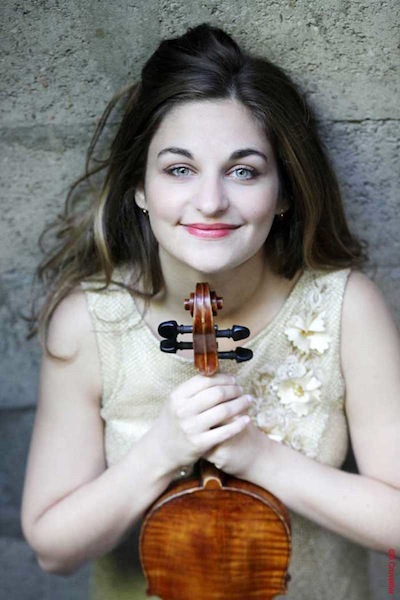Prokofiev’s “Cinderella” provides the highlights with Fort Worth Symphony

Alexandra Soumm performed Sibelius’s Violin Concerto with the Fort Worth Symphony Friday night.
Russian violin soloist Alexandra Soumm won an enthusiastic ovation Fridaynight at Bass Performance Hall in a concert with the Fort Worth Symphony and music director Miguel Harth-Bedoya. Soumm’s passionate stance and bravura clearly matched, for the audience, the dark, searching character of Sibelius’s Violin Concerto.
But, while the audience adoration was not entirely unmerited, there were issues of concern. The opening passages are no doubt among the most difficult in the violin concerto repertoire, and, while the strings and conductor Harth-Bedoya managed to control the muted, pianissimo introduction, Soumm, whose immediate entry should be mezzo-forte and sharply focused, proceeded as if from a distance—granted, an interesting strategy, but an experiment that should have been scrapped before trying it out in public.
After this rocky start, Harth-Bedoya and Soumm never found clear direction or momentum in the entire first movement; rather than a strong sense of unity, the movement emerged as a series of fragments. The second and third movements fortunately achieved considerably more forward motion; Soumm’s wide dynamic range and her deep, rich tone quality made up, at least for the vast majority of the audience, for some brief wobbles in intonation and some tiny ensemble issues.
The concert had opened with Adam Schoenberg’s neatly evocative La Luna Azul (The Blue Moon), a representative of the densely colorist, evocative style that apparently has taken over new American symphonic music. A muffled gong announces a gradual crescendo and extended sections of serenity (presumably bathing in moonlight) followed by Ravelian festivities.
This work asks little of the listener beyond a state of semi-consciousness, but, admittedly, returns much in the way of pleasant, borderline easy listening. A little more intellectual rigor seems to be called for in this, and much other music in this current reigning school of composition, albeit orchestras certainly benefit from a body of contemporary music that audiences can enjoy immediately.
The one (almost) unadulterated first-rate musical accomplishment on the program arrived after intermission with a set of thirteen excerpts, chosen by Harth-Bedoya, from Prokofiev’s ballet score for Cinderella. Often regarded as the lesser younger sibling of the same composer’s monumental ballet score for Romeo and Juliet, Cinderella is a goldmine of inspired and skillfully crafted moments, here arranged as a 35-minute narrative of the beloved fairy tale.<
Harth-Bedoya and orchestra were generally in fine form for the rich array of colors and moods from one of the twentieth century’s greatest musical geniuses. The performance was being recorded for commercial release, so, hopefully, conductor and orchestra can create a more steady, concise opening entry on the subsequent performances this weekend. Other than that, the magic of the fairy tale and of Prokofiev’s music was captivatingly realized.
The program will be repeated 7:30 p.m. Saturday and 2 p.m. Sunday at Bass Performance Hall. fwsymphony.org; 817-665-6000.
Posted Apr 09, 2017 at 12:20 am by Sacha Soumm
Hello Mr Gay!
Thank you so much for this very nice review from Friday’s concert, although we might disagree, indeed, on the begining of the first movement. 🙂
The reason for me starting very soft and taking a whole half page to achieve full strength is “simply” because I have met the grand-daughter and grand-grand-daughter of Sibelius a few years ago in Lugano ( they live there), and they told me that Sibelius often thought the crescendo was done way too early and that he would prefer something more mysterious for the start of the concerto.
To get that sort of information is crucial in the life of an interpreter, but of course there should be as many interpretations as there are musicians, and this is the beauty of it, don’t you think? 🙂
Thank you for coming, and all the best!
Alexandra